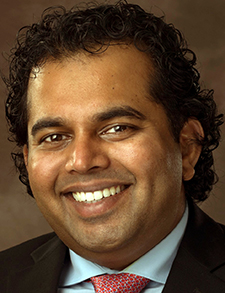The supply chain. Lean manufacturing. Just-in-time economy. Unless you hold a business degree or just love reading the Wall Street Journal, chances are these terms weren’t part of your vocabulary until recently. And as health care providers, there’s no real reason they should have been.
However, COVID-19 has introduced us to these terms whether we like it or not. In this article, we take a closer look at supply-chain issues and how hospitalists are keeping up. We highlight lessons learned, current challenges, and big-picture goals moving forward.
Simply defined, a supply chain is a system of producing a product from start to finish. Less simply defined, supply chains are complicated logistical networks of raw materials, suppliers, manufacturers, distributors, and retailers.1 With so many moving pieces, the potential for system breakdown is high. It’s sort of like the 1,000-piece train set you bought your kid for the holidays. With one piece missing, the train might not make it around the track on schedule…or at all.
The “just-in-time” or “lean manufacturing” economy is a management strategy that saves money by avoiding the costs and waste of storing surplus goods. It’s the business version of pro re nata (PRN)—goods are manufactured and shipped only as needed. This sounds reasonable, until demand rapidly and unexpectedly exceeds supply, as happened during the COVID-19 pandemic.2
As we are all painfully aware, shortages of personal protective equipment (PPE) made it difficult and risky to care for patients. Hospitals were forced to compete to obtain PPE or to get creative to preserve the little they had.3 Other supplies were limited too: ventilators, oxygen, hospital beds…even health care workers. But hospitalists mobilized quickly to respond. Collaboration, relationship building, and ingenuity enabled hospitals to care for patients despite unprecedented supply issues.

Williams
Kristie G. Williams, RN, MSN, vice president, Carilion Giles and Carilion Tazewell Community Hospitals, Virginia, shared one of the countless examples of out-of-the-box thinking during the early days of the pandemic. When missing pieces rendered some of their powered air-purifying respirators nonfunctional, a local vocational high school used their 3-D printer to manufacture new ones. “Small communities really shine when there’s a crisis. We pull together. It’s all about relationships,” she said.

Dr. Skandhan
Amith Skandhan, MD, FACP, SFHM, assistant professor, internal medicine hospitalist, and director of physician integration, Southeast Health, Dothan, Ala., echoed Ms. Williams’s sentiments about resourcefulness and teamwork. Dr. Skandhan co-founded the Wiregrass Chapter of SHM at his hospital. During the COVID-19 pandemic, his chapter created a weekly virtual check-in for the program directors of hospital medicine in the state of Alabama, to share information and discuss procedural challenges. This forum tackled topics such as patient flow, lab supply shortages, in-hospital PPE development, PPE autoclaving, and sharing care pathways. It particularly helped smaller institutions with limited resources caring for disadvantaged patient populations.
Dr. Skandhan said, “Over time, this forum became a channel for passing knowledge. We started building PPE in the hospital and shared data on how to do it. And now, administrators are connected with each other to address supply-chain issues.”
Lessons learned
Unfortunately, the COVID-19 pandemic is not the first to draw attention to supply-chain issues in health care. In many ways, it simply revealed wounds that were already there. Supply-chain issues were evident as early as the 2003 Severe Acute Respiratory Syndrome (SARS) pandemic, but few articles to this effect were generated.4 This time around, we’re trying to respond differently.
Recent publications have identified two main lessons learned: the importance of organizational leadership, collaboration, and relationship building, both in and across organizations; and the need to diversify product resources, safeguard the supply chain, and improve technology that anticipates shortages.4,5
“This pandemic forced hospitalists to become aware that the supply chain is even an issue at all. Normally, you want an IV? You get it. You want a medication? You get it. But now the conversation has shifted to how do we get these things, how do we make these things, and how do we ensure we continue to have them. And we are connecting our hospital administrators and sharing information,” Dr. Skandhan said.

Dr. Vashist
Amit Vashist, MD, FACHE, senior vice president and chief clinical officer, Ballad Health, and an actively practicing hospitalist, leads an integrated 21-hospital health system spanning southwest Virginia, northeast Tennessee, northwest North Carolina, and southeast Kentucky. Dr. Vashist said, “In health care, we have relied heavily on foreign-sourced products to run our hospitals, and COVID-19 exposed the limitations of this dependence. Moving forward, our group purchasing organization (GPO) is trying to have as many domestic suppliers as possible. We also created a PPE supply cache and a daily usage report that has provided more visibility to our supply chain to ensure adequate stocking levels.”
Current challenges
Despite significant progress in the last two years, we still have a long way to go, and current challenges are not just COVID-related.
As of January 19, 2022, the U.S. Food and Drug Administration medical-device shortages list still included PPE, as well as dialysis-related products, laboratory testing supplies and equipment, and ventilation-related products.6 Hospital bed availability remains uncertain, especially with surges caused by new virus variants.7 And most recently, we’re seeing a shortage of health care workers. Some staffing issues are transient due to the temporary absence of those infected with COVID-19. During the peak of the omicron variant surge in January 2022, for example, 50% of hospitals in New Mexico reported staffing shortages.8 But other shortages are more permanent.
The U.S. Bureau of Labor and Statistics estimates that nearly 300,000 health care workers have left their jobs since February 2020.9 A poll of 1,000 workers from a survey research company found that 18% of health care workers have quit since the pandemic began.10 Ms. Williams noted that at her hospital, “staffing is a huge problem now. Physicians are retiring early. Nurses are leaving the profession altogether or transitioning to travel nursing for more lucrative opportunities.”
Big-picture goals
With so many ongoing challenges, where should we start? For hospitalists, it comes down to one word: stability. Stability of the health care workforce, and stability of supply chains.
“Stabilizing the health care workforce needs to be a top priority,” said Ms. Williams. Without medical personnel, we cannot adequately care for patients. And as workers leave health care, it puts further stress on the remaining staff due to staffing shortages. Action is needed to address the dangerous cycle that burnout has created.
Regarding stabilization of the supply chain, Dr. Vashist advocated for “ensuring U.S. ports and infrastructure become more agile so goods can be shipped to us in real-time, as well as a continued focus on domestic producers.” He said “Televisions sitting in shipping containers at the Port of Los Angeles is inconvenient. But when it comes to health care supplies, it’s a matter of life and death.”
Ultimately, as Dr. Skandhan candidly noted, “The goal is for physicians NOT to be discussing the supply chain at all, so we can refocus on practicing medicine.”
The pandemic unveiled substantial vulnerabilities in hospital supply chains, but the lessons learned are many. We are collaborating, building relationships, and sharing information more than ever before. We are paying attention to the supply chain, and actively working to improve and safeguard it. Stability is the name of the game moving forward—stability of the supply chain and the health care workforce itself.
Samantha C. Shapiro, MD, is a board-certified internist, rheumatologist, and affiliate faculty member of the Dell Medical School at the University of Texas at Austin. She received her training in internal medicine and rheumatology at Johns Hopkins University, Baltimore.
References
- Michigan State University. Supply chain management: here’s what you need to know. Available at: https://www.michiganstateuniversityonline.com/resources/supply-chain/what-is-supply-chain-management/. Accessed 4/2/2022.
- Philip Seo. Harder to breathe: The infrastructure behind medical oxygen. The Rheumatologist website. Available at: https://www.the-rheumatologist.org/article/harder-to-breathe-the-infrastructure-behind-medical-oxygen/. Published online 1/10/ 2022. Accessed 4/2/2022.
- Lagu T, et al. Fool me twice: the role for hospitals and health systems in fixing the broken PPE supply chain. J Hosp Med. 2020;15(9): 570-1. doi:10.12788/jhm.3489
- Best S, Williams SJ. What Have we learned about the sourcing of personal protective equipment during pandemics? Leadership and management in healthcare supply chain management: a scoping review. Front Public Health. 2021;9:765501. doi:10.3389/FPUBH.2021.765501/FULL
- Okeagu CN, et al. Principles of supply chain management in the time of crisis. Best Pract Res Clin Anaesthesiol. 2021;35(3):369-76. doi:10.1016/J.BPA.2020.11.007
- US Food and Drug Administration. Medical device shortages during the COVID-19 public health emergency. Available at: https://www.fda.gov/medical-devices/coronavirus-covid-19-and-medical-devices/medical-device-shortages-during-covid-19-public-health-emergency#shortage. Last updated 3/21/2022. Accessed 4/2/2022.
- US Department of Health And Human Services. Hospital utilization. https://protect-public.hhs.gov/pages/hospital-utilization. Last updated 3/28/2022. Accessed 4/2/2022.
- Sharon Lurye. States with the biggest hospital staffing shortages. Available at: https://www.usnews.com/news/health-news/articles/2022-01-13/states-with-the-biggest-hospital-staffing-shortages. Published online 1/13/2022. Accessed 4/2/2022.
- US Department of Labor. News Release. Available at: https://www.bls.gov/news.release/pdf/empsit.pdf. Published online 4/1/2022. Accessed 4/2/2022.
- Gaby Galvin. Nearly 1 in 5 health care workers have quit their jobs during the pandemic. Morning Consult. Available at: https://morningconsult.com/2021/10/04/health-care-workers-series-part-2-workforce/. Published online October 4, 2021. Accessed 4/2/2022.